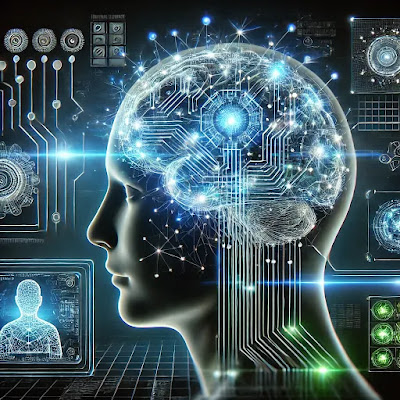Technology that knows what you're feeling
What happens when computer knows more about us than we do? A computer now can detect our slightest facial microexpressions and be able to tell the difference between a real and a fake smile. That's only the beginning. Technology has become incredibly intelligent and already knows a lot about our internal states.
Whether we like it or not, we already are sharing part of our inner lives that's out of our control. That seems like a problem because a lot of us like to keep what's going on inside from what people actually see. We want to have an agency over what we share and
what we don't. We all like to have a poker face.
Scientist have spent a lot of time studying the circuits in the brain that create a unique perceptual realities that we each have. Now we can bring that together with the capabilities of the current technology to create a new technology that does make us better, feel more, connect more.
We have to be OK losing some of our agency. With some animals, it's really amazing, and we get to see into their internal experiences. We get this upfront look at the mechanistic interaction to how they respond to the world around them and the state of their biological systems.
This is where evolutionary pressures like eating mating and making sure we don't get eaten drive deterministic behavioral responses to information in the world. We get to see into this window, into their internal states and their biological experiences.
We humans like to think we have cognitive control over what people see, know and understand about our internal states -- our emotions, our insecurities, our bluffs, our trials and tribulations -- and how we respond. We get to have a poker face. Your eye responds to how hard your brain is working.
Your pupil doesn't lie. your eyes gives away your poker face.When your brain works harder your autonomic nervous system drives your pupil to dilate. When it's not, it contracts. We might think we have more agency over the reveal of our internal state but it is not. Today's technology is starting to make it really easy to see the signals and tells that give us away.
The amalgamation of sensors paired with machine learning on us , around us and in our environments, there is lot more than cameras and microphones tracking our external actions. Our bodies radiate our stories from changes in the temperature of our physiology. We can look at these as infrared thermal images.
The dynamic signature of our thermal response gives away our changes in stress, how hard our brain is working, whether we are paying attention and engaged in the conversation we might be having and even whether we are experiencing a picture of fire as if it was real.
We can actually see people give off heat on their cheeks in response to an image of flame. But aside from giving away our poker face bluffs, what if dimensions of data from someone's thermal response gave away glow of interpersonal interest? Tracking the honesty in someone's thermal image might be a new part of how we fall in love and see attraction.
We can actually see people give off heat on their cheeks in response to an image of flame. But aside from giving away our poker face bluffs, what if dimensions of data from someone's thermal response gave away glow of interpersonal interest? Tracking the honesty in someone's thermal image might be a new part of how we fall in love and see attraction.
our technology can listen, develop insights and make predictions about our mental and physical health just by analyzing the timing dynamics of our speech and language picked up by microphones. Groups have shown that changes in the statistics of our language paired with machine learning can predict the likelihood someone will develop psychosis.
I am going to take a step further and look at linguistic changes in our voice that show up with lot of different conditions.
Dementia, diabetes can alter the spectral coloration of our voice. Changes in our language associated with Alzheimer's can sometimes show up more than 10 years before clinical diagnosis. What we say and how we say it tells a much richer story then we used to think. The devices we already have in our homes could, if we let them, give us invaluable insight back.
The chemical composition of our breathe gives away our feelings. There's a dynamic mixture of acetone, isoprene and carbon dioxide that changes when our heart speeds up, when our muscles tense, and all without any obvious change in behaviors. Suspense, fear, joy all show up as reproducible, visually identifiable moments.
We broadcast a chemical signature of our emotions. We are enabling the capabilities that true technological partners can bring to how we connect with each other and with our technology. If we recognize the power of becoming technological empaths, we get this opportunity where technology can help us bridge the emotional and cognitive divide.








No comments:
Post a Comment